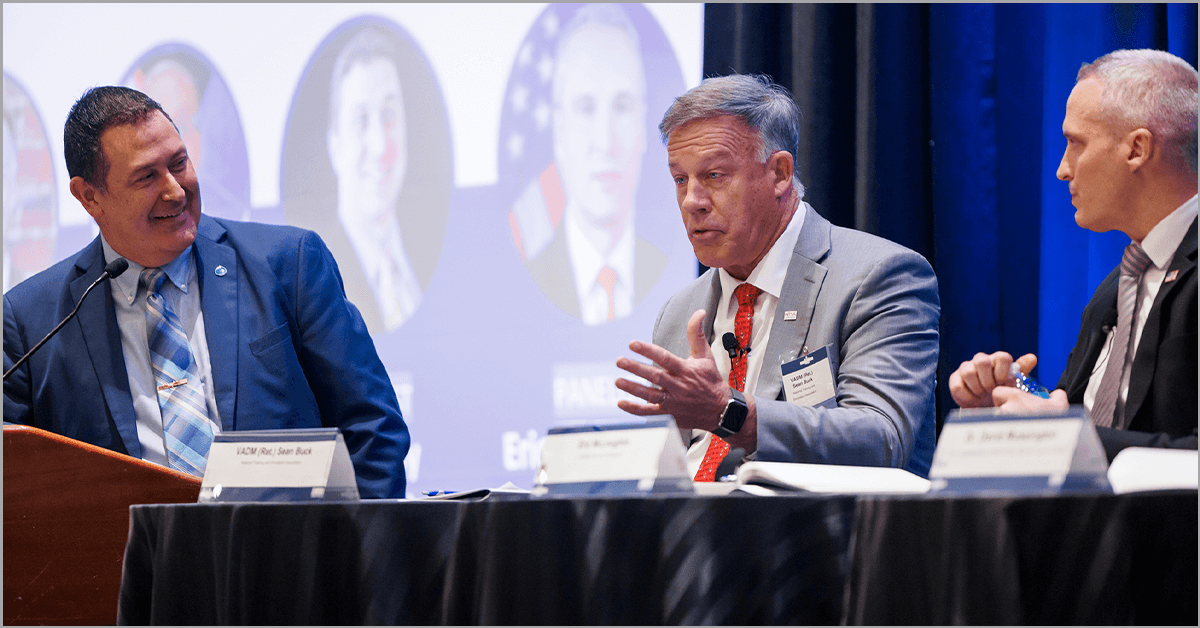Real-time 3D simulation and digital twin technologies provide the U.S. government — especially the military — an ability to train its personnel “across a much broader spectrum of scenarios and ‘what if’s,’” explains Ret. VADM Sean Buck, president of the National Training and Simulation Association. Rather than be limited by what is permitted in the physical realm, the possibilities are boundless when the training environment is entirely digital.

“It’s not just scale, but things that you couldn’t do before. You can’t destroy real world equipment unless you want to spend a whole lot of money, right? But you can destroy a model and then just generate a new one in a few moments. So that’s, I think, just a huge, huge enabler,” said Timothy Schaad, vice president and technical director of the federal civilian sector at ManTech.
Buck and Schaad sat for a panel discussion about real-time 3D and its applications for national security at the Potomac Officers Club’s 2024 Homeland Security Summit on Wednesday. They spoke alongside representatives from the Cybersecurity and Infrastructure Security Agency and Homeland Security Investigations, led by moderator Scott Ariotti of Capgemini Government Solutions.
Don’t miss Potomac Officers Club’s last major event of the year: the 2024 Healthcare Summit. On Dec. 11 at the Falls Church Marriott Fairview Park in Virginia, the foremost technologists of HHS, the VA, CMS and more will speak to the contracting community about the biggest forthcoming opportunities in the healthcare IT space.
Dr. David Mussington, executive assistant director for infrastructure security at CISA, said that digital twins are helpful for identifying exploitable risk in critical infrastructure. When Ariotti asked him if it could potentially help protect U.S. systems against infiltrating Chinese hackers — such as the group Volt Typhoon, who the agency’s Executive Director Bridget Bean addressed in her keynote speech earlier in the event — Mussington was bullish.

Going further, he said substitution of humans with robotics is also going to be a necessary differentiator, observing, “As far as I know, human beings aren’t getting faster, aren’t getting smaller … and we aren’t as numerous as we’re going to need to be … so that means we need more machine learning, more artificial intelligence embedded in devices, embedded at the edge of network, anticipating threats, characterizing them faster—automating remediations, often before human beings are going to be able to make that calculation themselves.”
But the limits of human capabilities are potentially expanding, the panelists agreed, as the technologically savvy members of Gen Z enter the workforce and rise through the ranks. However, Buck proffered that the government and military need to make sure that technology is up to date and connectivity is strong across domains to meet the high expectations of the younger generation.
“They’ve all been born into this world of technology with a completely different set of expectations for how they are trained … They have an expectation of a very thorough, realistic, scenario-based training, and to be trained often, and they want high fidelity,” Buck stated frankly.
Buck proudly pointed to the example of the USS Abraham Lincoln, an aircraft carrier in deployment overseas with a joint synthetic environment, simulators for all of the fifth generation aircraft and a capability for pilots to “train every single day in a very realistic way.” Instituting systems like these across the board would, Buck believes, help boost the flagging retention rates of young people that currently ail the Department of Defense.
At the end of the day, digital twins and 3D modeling are much cheaper options for training and simulations and need to be accelerated in “damn near everything we do,” Buck said, to “save the most precious resource that we humans have. And that’s time.”
Eric McLoughlin, deputy assistant director of Homeland Security Investigations also participated in the conversation.




